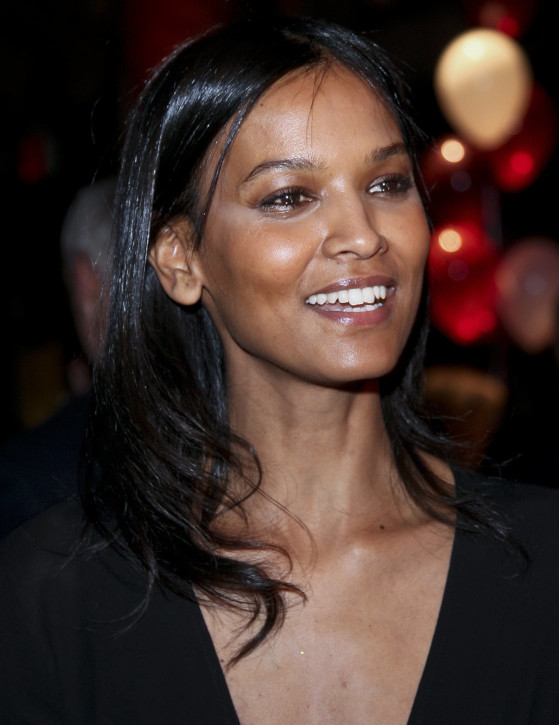The Liya Kebede Foundation |
 |
Liya Kebede BiographyAmerican Vogue has touted Liya Kebede, as a member of the "New Establishment". Models.com proclaimed "All Hail Liya!". Since being featured in their "Of the Minute" section five years ago, she has moved all the way up in rank as their number one choice of "Top 50 Models". Liya has succeeded in becoming the name on everybody's lips and is definitely an IMG star on the rise.This international beauty was born and raised in Addis Ababa, Ethiopia. While in school at the French Lycee, a film director spotted the young beauty and introduced her to a French modeling agent. After completing her studies, she moved to France to pursue work through a local Parisian agency. Liya inevitably relocated to the fashion capital of New York City, where she currently resides full-time. It all came together when the 27 year old stunner appeared on the cover and in 4 out of 6 stories of French Vogue, shot by Ines van Lamsweerde and Vinoodh Matadin, with a headline that proudly states the issue is "All about Liya." She has since appeared on the covers of Italian, Japanese, Korean & Spanish Vogue, Numero, V, French, Flair, i-D, South African Elle, Harper's & Queen, Essence, and Time's Style & Design issue. Liya was also recently featured on the September 2004 cover of American Vogue, where she was named one of the leading faces of "the Return of the Super Model". Liya can currently be seen for a second time on the May 2005 cover of American Vogue, with the heading "Cover model with a cause", profiling her work with the World Health Organization as their Goodwill Ambassador for her tireless efforts in raising awareness for the difficulties that women and children face in the developing world. In the letter from the editor, Anna Wintour states "It's very gratifying that Kebede, who has long been a model of the highest rank, should come into her own this way. This is her moment, and it has not arrived by virtue of outsize fabulousness. She is beautiful, professional, and substantial, which makes her not just a model but a role model". In February of 2003, Liya became the newest face of Esteé Lauder cosmetics - the first woman of color to serve as a representative of its brand's 59-year history, joining Carolyn Murphy and Elizabeth Hurley as the third member of the model trio. "Liya defines modern beauty," says Aerin Lauder. "Her status as an international beauty, runway favorite and designer muse infuses the brand with energy and modernity. Her global appeal connects us with consumers of all ages and cultures in an exciting and unexpected way." |
Media about Liya KebedeFashion models breaking barriersWomen of color still facing challenges on the runway From Jason Carroll "I think Liya's Estée Lauder contract was probably the shot heard round the world," said Ivan Bart, president of IMG Models. Kebede is satisfied with her status. "I don't think I can ask for anything more," she said. Liya's break came when Tom Ford, former designer for Gucci, chose her for the runway when she was still a struggling model in Chicago. "It was tough. I got lucky with the whole Tom Ford thing," explained Kebede. Her success -- and that of Sudan's Alek Wek and Japan's Ai Tominaga -- is the exception, though. Though those models are redefining beauty standards, progress for most models of color is slow. The omissions are evident. Take fashion giant Prada, for example. CNN looked at runway shows going back several years. Last year, there were no women of color in their show. In 2003, none and in 2002, zero. Indeed, Prada has not put a woman of color on its runway in at least six years. A Prada spokesperson did not return CNN's calls. Some models try to remain upbeat. "It has always been a sweet struggle," says Indian model Ujjwala Raut. But Brazilian-born model Caroline Ribeiro is more direct. "That's the way it is, and it's never going to change," she said. "I don't think it's going to change." Sean Patterson, president of the Wilhelmina modeling agency, agrees that it's difficult to place a model of color. "It can be a tough sell and that can be heartbreaking, because you have some really unbelievably gifted people, beautiful people who aren't given the opportunity to break through," he said. Designer Matthew Williamson believes the situation is changing, however -- though he acknowledges using models of color in major fashion shows, such as those of New York Fashion Week, or in big advertising campaigns is still the exception. "There's resistance. I don't know what it is. I think it's probably getting less and less so," he said. "It's kind of safe, it there's one Naomi ... one Alek Wek ... one Liya, you know, but when you've got all on a runway, it creates a stir and a shift and I think people aren't quite comfortable with what that shift is," said Michaela Angela Davis, fashion and beauty manager of Essence magazine, which is targeted at African-American women. Until then, Liya will keep pushing. "You have to keep going. You have to persevere," Kebede said. |